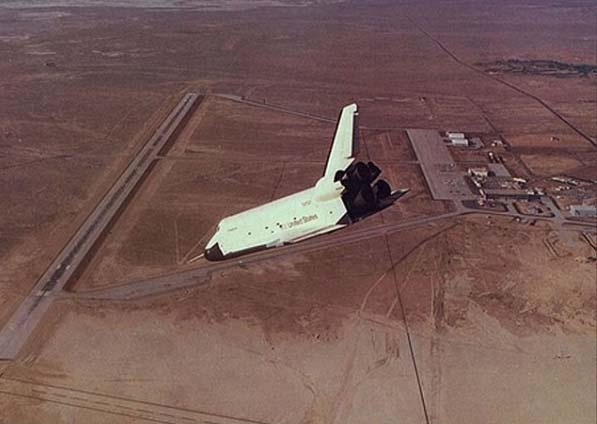
The Space Shuttle Discovery is up in orbit, safely docked to the International Space Station, and for the next five days, astronauts will be busy figuring out whether it's safe for them to come home. In the meantime, the rest of the Shuttle fleet is grounded (confined to base, not allowed to play with its spacecraft friends) because that pesky foam on the fuel tank keeps falling off.
There are 28 Space Shuttle flights still scheduled, firmly or tentatively, through 2010, when the current orbiter is supposed to retire in favor of a yet-to-be-designed replacement (which will not fly until 2014). On the eve of this launch, NASA put the likelihood of losing an orbiter at 1 in 100, a somewhat stunning concession by an agency notorious for minimizing the risk of its prize program. Given the track record, and the unanticipated foam problems, it's probably reasonable to assume a failure rate approaching 2%, a number close to the observed failure rate (1 in 57) and one likely to fall on the conservative side as the orbiters age.
For all the talk of safety improvements, there really isn't a way to make the Shuttle much safer. The changes made with so much fanfare after the Columbia loss have been marginal, serving to prevent the psychologically untenable situation of watching damage occur at launch and being unable to do anything about it before re-entry, many days later. Actual safety improvements to the Shuttle - putting the orbiter on top of the launch stack, installing a crew escape system - would be so hideously expensive that they have been consistently vetoed.
With 28 launches to go, probability tells us that the chance of losing another orbiter before the program's scheduled retirement is about 50-50. But past experience suggests that NASA will continue flying these things until one of them blows up again (note that suspicious four-year gap in manned flight capability right around the time the Shuttle is supposed to retire). This seems like as good a time as any to ask: why are we doing this?

Future archaeologists trying to understand what the Shuttle was for are going to have a mess on their hands. Why was such a powerful rocket used only to reach very low orbits, where air resistance and debris would limit the useful lifetime of a satellite to a few years? Why was there both a big cargo bay and a big crew compartment? What kind of missions would require people to assist in deploying a large payload? Why was the Shuttle intentionally crippled so that it could not land on autopilot? ① Why go through all the trouble to give the Shuttle large wings if it has no jet engines and the glide characteristics of a brick? Why build such complex, adjustable main engines and then rely on the equivalent of two giant firecrackers to provide most of the takeoff thrust? Why use a glass thermal protection system, rather than a low-tech ablative shield? And having chosen such a fragile method of heat protection, why on earth mount the orbiter on the side of the rocket, where things will fall on it during launch?
Taken on its own merits, the Shuttle gives the impression of a vehicle designed to be launched repeatedly to near-Earth orbit, tended by five to seven passengers with little concern for their personal safety, and requiring extravagant care and preparation before each flight, with an almost fetishistic emphasis on reuse. Clearly this primitive space plane must have been a sacred artifact, used in religious rituals to deliver sacrifice to a sky god.
As tempting as it is to picture a blood-spattered Canadarm flinging goat carcasses into the void, we know that the Shuttle is the fruit of what was supposed to be a rational decision making process. That so much about the vehicle design is bizarre and confused is the direct result of the Shuttle's little-remembered role as a military vehicle during the Cold War.
By the time Shuttle development began, it was clear that the original vision of a Shuttle as part of a larger space transportation system was far too costly and ambitious to receive Congressional support. So NASA concentrated on building only the first component of its vision, a reusable manned spacecraft that could reach low earth orbit. Since NASA assumed it would be able to fly Shuttle missions with a turnaround time as low as two weeks, this left the vexing question of what to do with all that spare launch capacity. The tiny commercial launch market was in no shape to supply such a wealth of satellites, so NASA turned to the one agency that had an abundance of things requiring shooting into space - the Air Force - and asked it to abandon its unmanned rocket programs, instead committing all future satellite launches to the Shuttle.
The Air Force was only too happy to agree, but at a crippling price. What the Air Force wanted to launch was spy satellites - lots of them, bulky telescopes with heavy mirrors, the bigger the better - and it wanted to launch them in an orbit over the Earth's poles, so they could snoop over the maximum amount of Red territory. This meant NASA had to go back to the drawing board, since polar orbits would require a heavier orbiter than the Shuttle design had anticipated ② , which in turn meant using a bigger rocket at launch, and dissipating more heat during re-entry.
Moreover, there was no way to launch a polar mission safely from Kennedy Space Center — it would mean overflying either heavily populated areas in the Carolinas or risking capture of a fuel tank by the wily Cubans. So the Air Force also demanded, and got, billions in funding to build a new Shuttle launch facility at Vandenberg Air Force base in California. And because some of the Air Force's military missions involved capturing a Soviet satellite on the sly and landing after one orbit, the Air Force demanded that the Shuttle be capable of gliding over a thousand miles cross-range during re-entry, so that it could catch up with the rapidly eastbound Air Force base underneath it. This meant bigger wings, which in turn meant more weight, an even more powerful rocket, and again a more complicated heat shield.
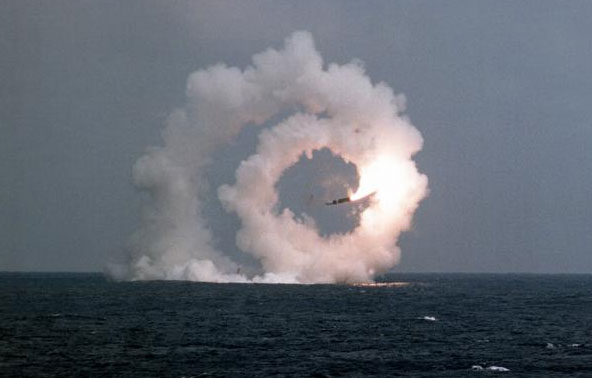
Most of the really wrong design decisions in the Shuttle system — the side-mounted orbiter, solid rocket boosters, lack of air-breathing engines, no escape system, fragile heat protection — were the direct fallout of this design phase, when tight budgets and onerous Air Force requirements forced engineers to improvise solutions to problems that had as much to do to do with the mechanics of Congressional funding as the mechanics of flight. In a pattern that would recur repeatedly in the years to come, NASA managers decided that they were better off making spending cuts on initial design even if they resulted in much higher operating costs over the lifetime of the program.
To further cut costs, and keep the weight from growing prohibitive, the Shuttle became the first manned spacecraft to fly without any kind of crew escape system, relying on certain components (solid rockets, wing tiles, landing gear) to function with complete reliability ③ . NASA also decided not to make the Shuttle capable of unmanned flight, so that the first test flight of the vehicle would have astronauts on board. This was a major departure for the traditionally conservative agency, which had relied on redundant systems wherever possible, and always tested unmanned prototypes of any new rocket. It showed how confident NASA had grown in its ability to correctly predict, simulate, and design for high reliability ④ .
The final Shuttle design, incorporating all of the budgetary and Air Force design constraints, was impressive but not particularly useful. Very soon after the start of the program, it became clear that Shuttle launches would not be routine events, that it would cost a great deal of money to repair each orbiter after its trip to space, and that estimates of launch cost and frequency had been wildly optimistic. At the same time, the Air Force proved unable to get the Vandenberg base ready for use, negating much of the reason for the extensive Shuttle redesign. After the Challenger explosion, the Vandenberg base was quietly mothballed. Not once did the Shuttle fly a mission to polar orbit.
Having failed at its stated goal, the Shuttle program proved adept at finding changing rationales for its existence. It was, after all, an awfully large spacecraft, and it was a bird in the hand, giving it an enormous advantage over any suggested replacement.
As the Strategic Defense Initiative took off, the Shuttle played a central role, envisioned both as a way of launching the complex components of SDI and snatching away whatever Soviet satellites might be sent up to interfere. The Shuttle even helped Reagan inadvertently bankrupt the Soviet Union, as the Soviets decided they needed a rival orbiter, and cloned the vehicle at terrific expense. ⑤
When the Cold War fizzled out towards the end of the eighties, NASA rebranded the Shuttle as a way of jump-starting the leap of capitalism from the Earth's surface to outer space, offering a variety of heavily subsidized research platforms for the private sector (which proved remarkably resistant to the allure of a manufacturing environment where raw materials cost $40,000/kg). And it stressed the scientific value of manned space flight, with each Shuttle mission now bespangled in a dazzling assortment of scientific experiments, like so many talismans against budget reduction. Suddenly it seemed you could not change your socks in space without doing valuable scientific research that would contribute directly to improving the lives of the American taxpayer.
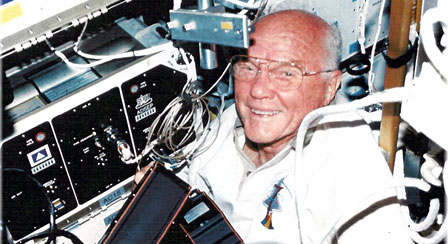
This period of Shuttle-as-cancer-cure found its apotheosis in the brilliantly cynical return of John Glenn to space. While legislators had been accelerated to orbital velocity before, Glenn was both a Senator and a sixties space hero, making him an ideal public relations cargo. Naturally, the slightest hint that the Senator had been launched into space for reasons other than the urgent demands of medical science was indignantly dismissed by the mission planners. At the now-usual cost of around a billion dollars ➅ , STS-95 spent ten days engaged in the following experiments:
- Sent cockroaches up to see how microgravity would affect their growth at various stages of their life cycle
- Studied a "space rose" to see what kinds of essential oils it would produce in weightless environment. (in a triumph of technology transfer, this was later developed into a perfume).
- At the suggestion of elementary school children, monitored everyday objects such as soap, crayons, and string to see whether their inertial mass would change in a weightless environment. Preliminary results suggest that Newton was right.
- Monitored the growth of fish eggs and rice plants in space (orbital sushi?)
- Tested new space appliances, including a space camcorder and space freezer
- Checked to see whether melatonin would make the crew sleepy (it did not)
And of course, there was John Glenn, monitored inside and out, blood tested, urine sampled, entire organism analyzed for signs of accelerated aging. Close observation of the Senator suggested that there might not be any medical obstacles to launching the entire legislative branch into space, possibly the most encouraging scientific result of the mission.
Along with these craggy summits of basic research, the astronauts performed a raft of prepared experiments in metallurgy, medicine, fluid mechanics, embryology, and solar wind detection, all of which had one thing in common - they were designed to minimize crew interaction, in most cases requiring the astronauts to do little more than flip a switch ➆ .
This brings up a delicate point about justifying manned missions with science. In order to make any straight-faced claims about being cost effective, you have to cart an awful lot of science with you into orbit, which in turns means you need to make the experiments as easy to operate as possible. But if the experiments are all automated, you remove the rationale for sending a manned mission in the first place. Apart from question-begging experiments on the physiology of space flight, there is little you can do to resolve this dilemma. In essence, each 'pure science' Shuttle science mission consists of several dozen automated experiments alongside an enormous, irrelevant, repeated experiment in keeping a group of primates alive and healthy outside the atmosphere.
Given this shaky ground, NASA has been understandably eager to put up its true brilliancy, part of the original STS plan that would not just create a need for Shuttle missions into the forseeable future, but make it practically impossible to cancel the manned space program: the International Space Station.
The ISS was another child of the Cold War: originally intended to show the Russians up and provide a permanent American presence in space, then hastily amended as a way to keep the Russian space scientists busy while their economy was falling to pieces. Like the Shuttle, it has been redesigned and reduced in scope so many times that it bears no resemblance to its original conception. Launched in an oblique, low orbit that guarantees its permanent uselessness, it serves as yin to the shuttle's yang, justifying an endless stream of future Shuttle missions through the simple stratagem of being too expensive to abandon.
Of course, the ISS has also been preemptively armed with science, but NASA has found much more effective safeguards against potential budget cuts. The station's inordinately expensive modules have mainly come from foreign space agencies, ensuring that even a NASA administrator foolhardy enough to let the thing drop into the sea would contravene a fistful of international treaties. And the station requires a permanent crew, a trick NASA learned from the Shuttle, so that there can be no question of mothballing it or converting it into an unmanned research platform.
In the thirty years since the last Moon flight, we have succeeded in creating a perfectly self-contained manned space program, in which the Shuttle goes up to save the Space Station (undermanned, incomplete, breaking down, filled with garbage, and dropping at a hundred meters per day), and the Space Station offers the Shuttle a mission and a destination. The Columbia accident has added a beautiful finishing symmetry - the Shuttle is now required to fly to the ISS, which will serve as an inspection station for the fragile thermal tiles, and a lifeboat in case something goes seriously wrong.
This closed cycle is so perfect that the last NASA administrator even cancelled the only mission in which there was a compelling need for a manned space flight - the Hubble telescope repair and upgrade - on the grounds that it would be too dangerous to fly the Shuttle away from the ISS, thereby detaching the program from its last connection to reason and leaving it free to float off into its current absurdist theater of backflips, gap fillers, Canadarms and heroic expeditions to the bottom of the spacecraft.
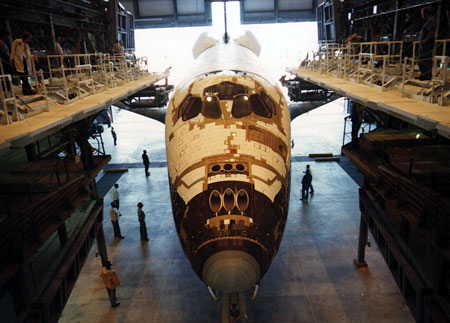
There is no satisfactory answer for why all this commotion must take place in orbit. To the uneducated mind, it would seem we could accomplish our current manned space flight objectives more easily by not launching any astronauts into space at all - leaving the Shuttle and ISS on the ground would result in massive savings without the slighest impact on basic science, while also increasing mission safety by many orders of magnitude. It might even bring mission costs within the original 1970's estimates, and allow us to continue the Shuttle program well into the middle of the century.
But NASA dismisses such helpful suggetions as unworthy of its mission of 'exploration', likening critics of manned space flight to those Europeans in the 1500's who would have cancelled the great voyages of discovery rather than face the loss of one more ship.
Of course, the great explorers of the 1500's did not sail endlessly back and forth a hundred miles off the coast of Portugal, nor did they construct a massive artificial island they could repair to if their boat sprang a leak. And we must remember that space is called space for a reason - there is nothing in it, at least not where the Shuttle goes, save for a few fast-moving pieces of junk from the last few times we went up there, forty years ago. The interesting bits in space are all much further away, and we have not paid them a visit since 1972. In fact, despite an ambitious "Vision for Space Exploration", there seems to be no mandate or interest in pursuing this kind of exploration, and all the significant deadlines are pushed comfortably past the tenure of incumbent politicians.
Meanwhile, while the Shuttle has been up on blocks, a wealth of unmanned probes has been doing exactly the kind of exploration NASA considers so important, except without the encumbrance of big hairless monkeys on board. And therein lies another awkward fact for NASA. While half the NASA budget gets eaten by the manned space program, the other half is quietly spent on true aerospace work and a variety of robotic probes of immense scientific value. All of the actual exploration taking place at NASA is being done by unmanned vehicles. And when some of those unmanned craft fail, no one is killed, and the unmanned program is not halted for three years.
Over the past three years, while the manned program has been firing styrofoam out of cannons on the ground, unmanned NASA and ESA programs have been putting landers on Titan, shooting chunks of metal into an inbound comet, driving rovers around Mars and continuing to gather a variety of priceless observations from the many active unmanned orbital telescopes and space probes sprinkled through the Solar System. At the same time, the skeleton crew on the ISS has been fixing toilets, debugging laptops, changing batteries, and speaking to the occasional elementary school over ham radio ➇ .
NASA is convinced that stopping the Shuttle program would mean an indefinite end to American manned space flight, and so it will go to almost any length to make sure there is a continuous manned presence in space. The arguments in its defense may be disingenuous, this reasoning goes, but the manned program is an irreplaceable asset in itself, as well as a high-profile mission that keeps funding flowing in for worthy but less glamorous NASA activities.
But this attitude is actually doing damage to the prospects of real manned space exploration. Sinking half the NASA budget into the Shuttle and ISS precludes the possibility of doing truly groundbreaking work on space flight. As the orbiters age, their upkeep and safety requirements are becoming an expensive antiquarian exercise, forcing engineers to spend their ingenuity repairing obsolete components and devising expensive maintenance techniques for sclerotic spacecraft, rather than applying their lessons to a new generation of rockets. The retardant effect the Shuttle has had on technology (like the two decades long freeze in expendable rocket development) outweighs any of its modest initial benefits to materials science, aerodynamics, and rocket design.
The Apollo program showed how successful the agency could be when given a clear technical objective and the budget required to meet it. But the Shuttle program has shown the flip side of NASA, as rational goals detach from reality under constantly changing political and funding pressures. NASA has learned valuable bureaucratic lessons - it knows to spread its work over as many jurisdictions as possible, it has learned that chronic funding is always better than acute funding, however much money a one-time outlay might save in the long run, and it has demonstrated that ineffectual projects can be sustained indefinitely if cancelling them is sufficiently awkward. But these are lessons we have already learned for far less on the ground, with Amtrak, and building a more photogenic, spaceborne version of the Sunset Limited in orbit hardly seems like a space policy for the 21st century.
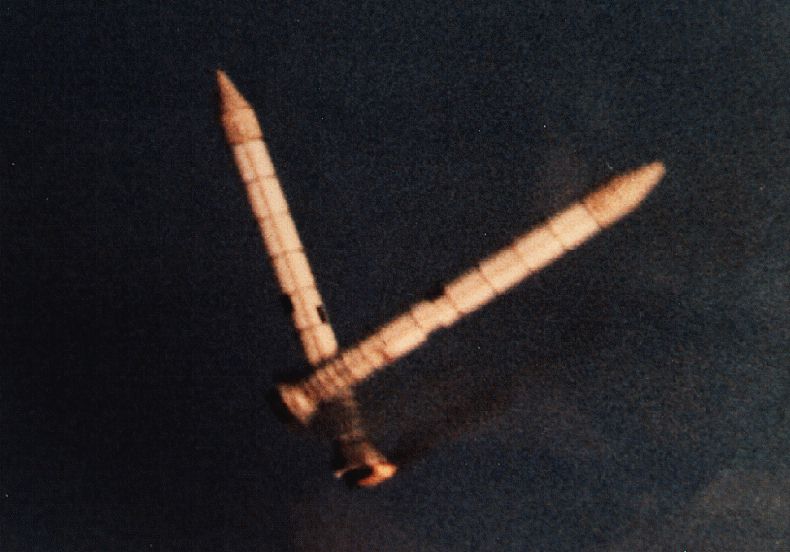
The people who work at and run NASA are not cynical, but the charade of manned space flight is turning NASA into a cynical organization. For all the talk of building a culture of safety, no one has pointed out the inherent contradiction in requiring that a program justified on irrational grounds be run in a rational manner. In an atmosphere where special pleading and wishful thinking about the benefits of manned flights to low earth orbit are not just tolerated, but required of astronauts and engineers, how can one demand complete integrity and intellectual honesty on safety of flight issues? It makes no sense to expect NASA to maintain a standard of intellectual rigor in operations that it can magically ignore when it comes to policy and planning.
The goal cannot be to have a safe space program - rocket science is going to remain difficult and risky. But we have the right to demand that the space program have some purpose beyond trying to keep its participants alive. NASA needs to take a lesson in courage from its astronauts, and demand either a proper, funded mandate for manned exploration, or close down the program. By NASA's own arguments, the commercial, technological and intellectual allure of manned space exploration are so great that it will not be a hard case to make. But even if the worst happens and the Shuttles are mothballed, with the the ISS left abandoned, the loss to science will have been negligible. That is the great tragedy of the current 'return to flight', and the sooner we force the agency to confront its failure, the greater our chances of salvaging a space program worth keeping out of the current mess.
Many source links for this article are available on my pinboard page.